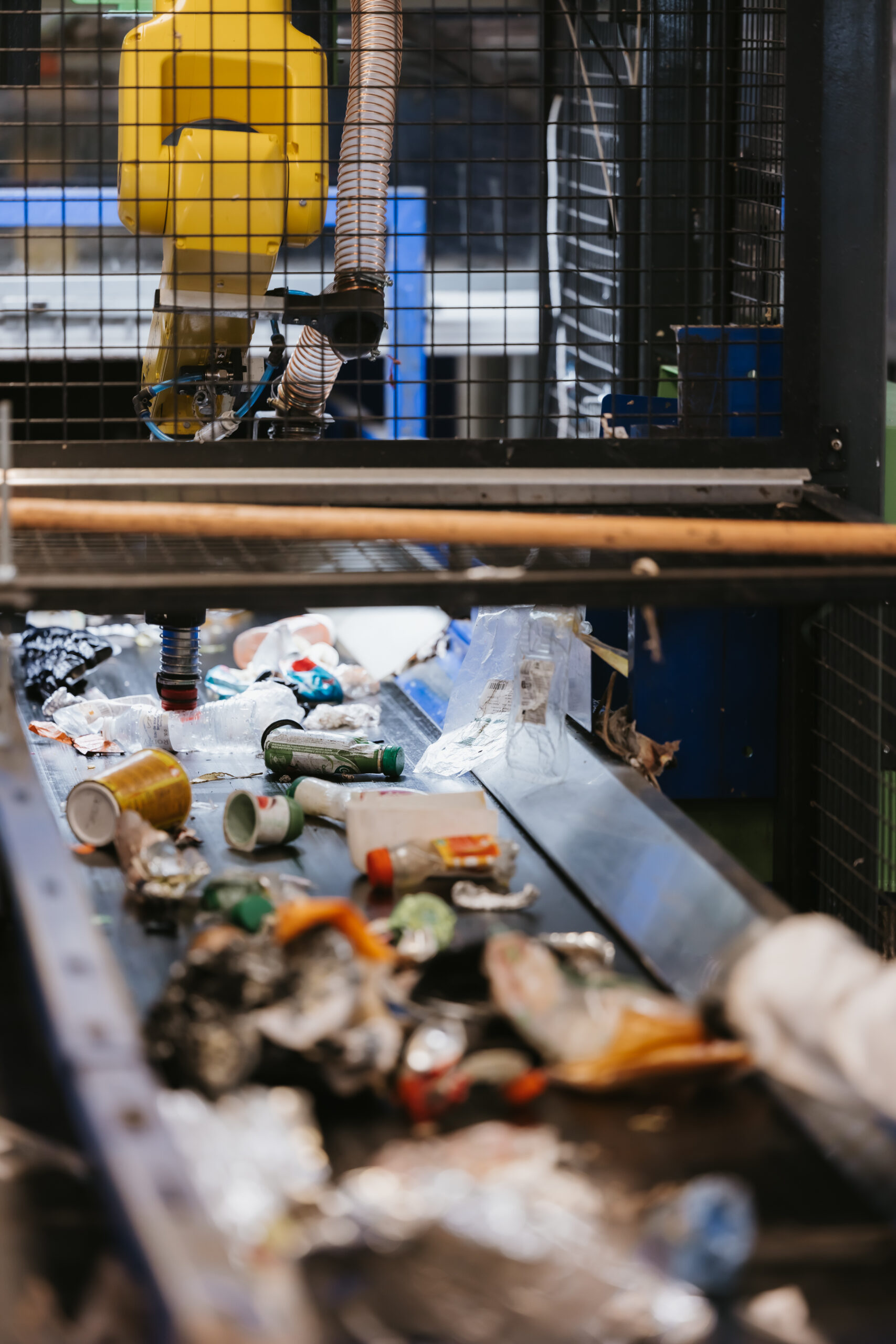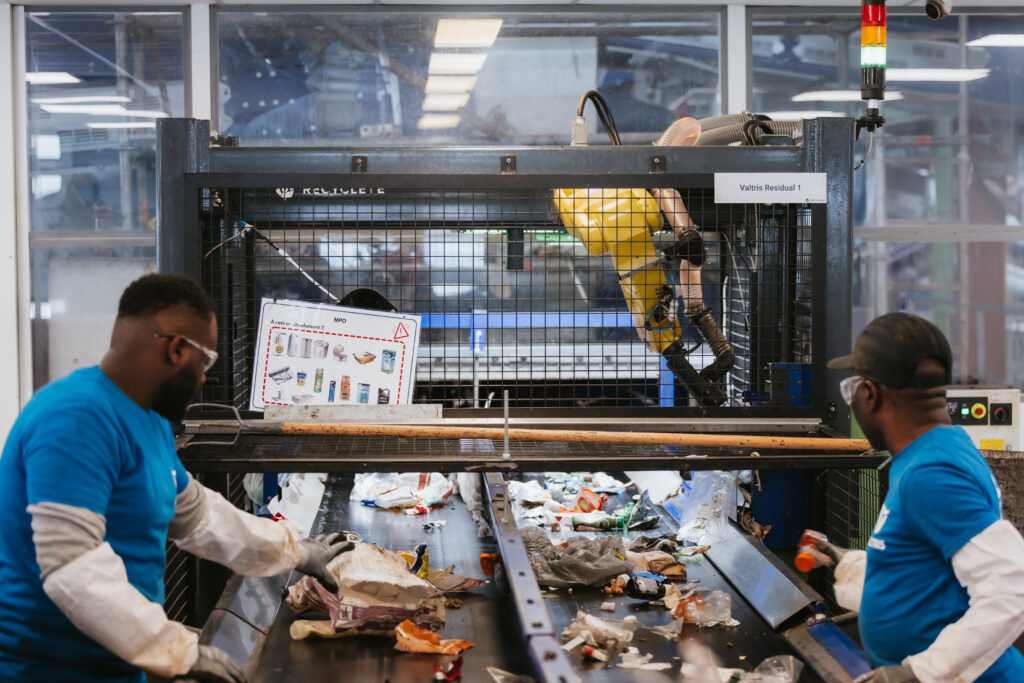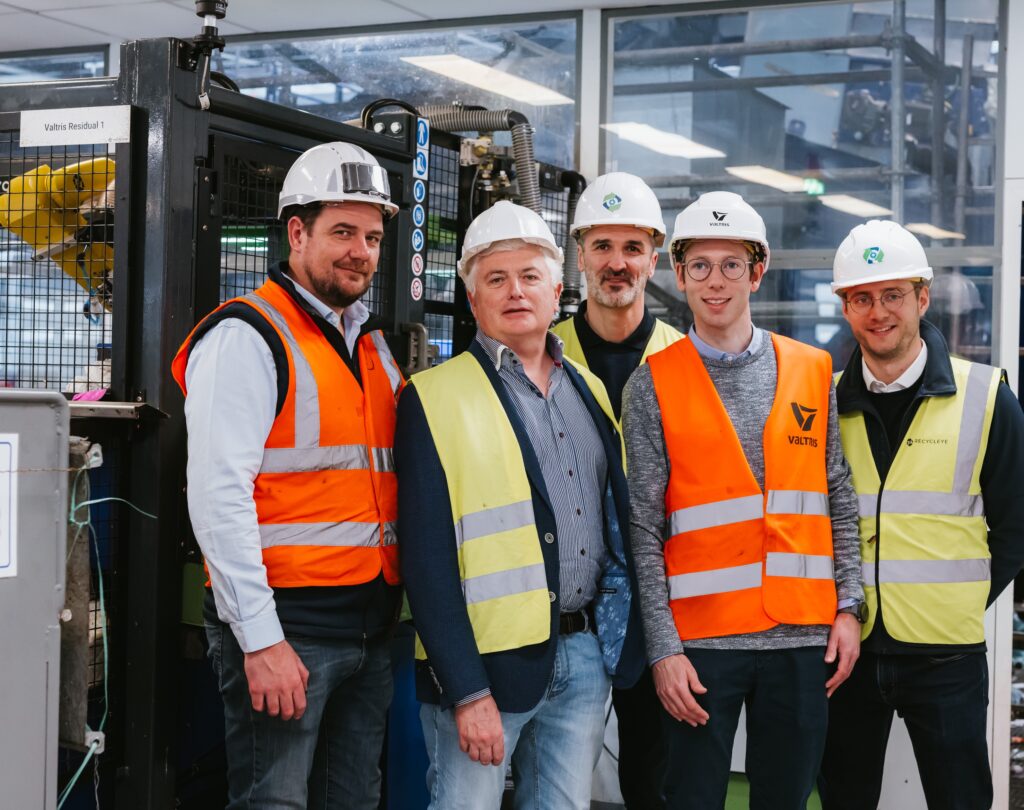28th May 2024
Today, VALTRIS, the DMR sorting centre in the Charleroi region of Belgium, announced the successful installation and commissioning of a robot for sorting recyclable materials within a waste stream. Powered by Artificial Intelligence (AI), in collaboration with the UK company Recycleye, this was VALTRIS’ first investment in robotic sorting, representing real added value in terms of sorting and recovering more recyclable materials. This is also the first installation of Recycleye automated technology in Belgium.

The Recycleye robot uses computer vision and artificial intelligence to automatically detect and sort waste. This technology has been installed at the end of the sorting line at VALTRIS, between the existing automated sorting equipment and manual pickers at the end of the residue line. Installed in June 2023, followed by a commissioning phase lasting a few weeks, the robotic sorting solution was fine-tuned to guarantee a high rate of capture of recyclable materials.
In practical terms, this robot uses computer vision to automatically detect and sort recyclable materials. It scans the waste stream using a camera system, and the AI enables the robot to identify the type of material in question. Once material has been selected, it is recirculated to the sorting line by the robot to follow the automated sorting path a second time, reducing the loss of valuable material.
Positioned at the end of the sorting process on the residual stream at VALTRIS, the robotic sorting solution has been designed to sort two categories of materials: recyclable materials, specifically clear PET, and all the other materials still recoverable from the residual stream. “We knew that there were still recyclable materials in the residual stream, and even if there is a tolerance for loss, we wanted to contribute to a better circularity of materials by recovering as much as possible,” explains Thomas Dalla-Riva, VALTRIS Sorting Centre Manager.
Priority has been given to recovering clear PET from the waste stream, with the robot using Artificial Intelligence to identify clear PET bottles wrapped in a sleeve. Whereas optical sorting technology only sees the sleeve and not the material of the packaging, Recycleye AI-powered robot is fully capable of identifying that the packaging is a bottle made of polyethylene terephthalate. The robot is in use at the sorting centre, operating 24 hours a day, 5 days a week.

The robot has proved capable of sorting around 1,600 objects per hour, with a purity rate of around 92% on clear PET and with 98% availability, thanks to quick and easy daily maintenance. In addition, the data captured by the camera is used to produce dashboards that help identify trends in the waste being processed, providing useful information.
VALTRIS chose to invest in this technology not only to guarantee the already high level of purity of the sorted waste, but also to improve it. The use of the robot has also helped to absorb more material during the busiest sorting periods. During periods of material overload, this technology has taken some of the manual workload off the 100 or so staff at the sorting centre.
“We also wanted to relieve our sorters’ workload by being able to sort the large quantities of packaging in the stream automatically and to generate data on what we sort to help us identify trends,” says the sorting centre manager. Despite the significant performance of the robot, the manual sorting work carried out by the staff on a daily basis remains essential if the sorting purity targets are to be met.
Recycleye, a world leader in AI-powered sorting and analysis equipment for waste management, worked closely with engineers from VALTRIS and Susty Wastes Solutions (SWS), specialist integrators of waste treatment facilities, to design a specific solution for picking clear PET bottles and other recoverable waste from the sorting centre’s residue line.
“We are very pleased to have successfully completed this first AI project and to see the results achieved to date in terms of purity and availability, demonstrating the tangible value of robotised sorting for VALTRIS, as a complement to the still essential manual sorting.”
Thomas dalla-riva, valtris sorting centre manager

with the robot
“This installation demonstrates the real value of automated robotic sorting in terms of production efficiency and quality. Recycleye Robotics adds value not only in terms of selecting waste that is still recoverable, but also by helping to identify trends in waste, from which VALTRIS is already benefiting”.
christophe parrot, recycleye head of sales